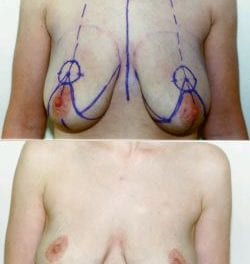A recent piece in The Economist asserts that the coming convergence of wireless communications, social networking, and medicine will transform health care. When your carpet calls your doctor:
Larry Nathanson, head of emergency-medicine “informatics” at one of Harvard Medical School’s hospitals, has experimented with using the device in the casualty ward. He writes that “initial tests with our clinical applications went amazingly well…the EKGs look better onscreen than on paper. It was great having all of the clinical information right at the bedside to discuss with the patient.”
Dr Nathanson’s enthusiasm hints at the potential of wireless gadgets to improve health care, and to ensure more personalised treatment in particular. Pundits have long predicted that advances in genetics will usher in a golden age of individually tailored therapies. But in fact it is much lower-tech wireless devices and internet-based health software that are precipitating the mass customisation of health care, and creating entirely new business models in the process.
Wireless health is “becoming omnipresent” in hospitals, according to Kalorama Information, a market-research firm; it estimates that the market for such devices and services in America alone will grow from $2.7 billion in 2007 to $9.6 billion in 2012. Don Jones of Qualcomm, a maker of networking technology, argues that the trend speeds diagnosis and treatment, and saves doctors’ and nurses’ time. GE, an industrial giant, and Sprint, an American mobile operator, have joined forces to offer hospitals such services. GE’s Carescape software allows the secure monitoring of patients’ health via mobile phones, as does rival software from Airstrip.
Doctors are an obvious early target for wireless health. A forthcoming report by the California HealthCare Foundation (CHCF), a think tank, estimates that two-thirds of American physicians already have smart-phones. Over one-third of American doctors use Epocrates, a program for mobiles and laptops which offers instant information on drug-to-drug interactions, treatment recommendations and so on. The software will soon be able to access electronic health records (EHRs) via mobiles—which the author of the CHCF’s report thinks could be “the killer application” of wireless health.
The hope is that nimble new technologies, from smart-phones to EHRs to health-monitoring devices, will empower patients and doctors, and thus improve outcomes while cutting costs. The near ubiquity of mobile phones is the chief reason to think this optimistic scenario may come true. Patients with fancy smart-phones can certainly benefit from interactive “wellness” applications that track diet, exercise and vital signs. Apple’s App Store, for example, offers thousands of health-related applications. Jitterbug, an American mobile operator that offers easy-to-use phones for the elderly, recently added more health services; rival mobile carriers are doing much the same.



